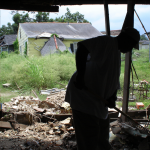Calliope (B.W. Cooper) Public Housing Development
3301 Martin Luther King Jr BlvdNew Orleans LA 70125
For the Neville family and many others, moving into the Calliope public housing development when it opened in the 1940s represented a step up from the old, crowded housing otherwise available to Black families in New Orleans. The complex, later renamed B.W. Cooper, eventually spread over 56 acres with more than 1,500 apartments. Like the Magnolia and the Lafitte developments, it produced generations of marquee artists that drew from the longstanding cultural traditions of its residents.
Art Neville, the oldest of the six Neville children, recalled the sound of Mardi Gras Indians in the Calliope: “I can hear hear ‘Hey Pocky A-Way,’ a chant echoing through the projects…Me and Charles would bang out the beat on cigar boxes in the window.” With their brothers Aaron and Cyril, they’d sing in the Calliope’s courtyards, imitating the doo-wop 78s they got from Tickles Record Store nearby. When their aunt bought Charles a saxophone, he played it with their neighbor, the great sax man Alvin “Red” Tyler.
In the mid-1950s, while still a teenager, Art fronted R&B bands and cut records including the Carnival staple “Mardi Gras Mambo“ with the Hawkettes (a band including fellow Calliope resident George Davis). In the 60s he assembled a group at the Ivanhoe on Bourbon Street that became the Meters, a seminal funk outfit and go-to studio band for the great artist/producer Allen Toussaint. In 1976 the extended Neville family came together to record the classic Black Masking Indian album “Wild Tchoupitoulas,” which led to the formation of the Neville Brothers band. Together, the four siblings became paragons of New Orleans music at the end of the 20th century.
In the 1950s, a few porches down from the Nevilles in the Calliope, brothers Earl and Wilson “Willie Tee” Turbinton embarked on a decades-long collaboration of their own. Willie Tee, a pianist, organist, and singer, hit the R&B charts with “Teasin’ You” in 1965, and, when he went into the studio with the Wild Magnolias in 1969, became the first person to lead a full band alongside Black Masking Indians on a recording. Earl, a soprano and alto saxophonist dubbed the “African Cowboy,” played with his brother on those groundbreaking sessions. Driven by Earl’s passion for the avant garde, the pair also ran The Workshop, a club that served as a base for modern jazz in New Orleans.
In the Calliope in the early 60s, the sisters Rosa Lee and Barbara Hawkins formed a vocal group with their cousin Joan Marie Johnson to compete in a high school talent show. As the Dixie Cups they scored a No. 1 hit with “Chapel of Love” in 1964 and followed up with “Iko Iko” the following year. (In the 2000s, Athelgra Neville—sister of the Brothers—took the spot in the trio that initially belonged to Johnson.)
Henry Butler, a revered pianist, vocalist, and teacher, was born blind in 1948, and grew up in the Calliope. He taught himself music by ear and memory, playing a neighbor’s piano when he could. He developed a rich, overflowing style that drew from his intensive study of European classical music, modern jazz, and blues.
Today, the most widely known musical brothers from the Calliope are Percy, Corey, and Vyshonn Miller. As Master P, C Murder, and Silkk the Shocker, they rapped about the stark realities of life in and around the complex in the 1990s. Master P, who saw himself primarily as a businessperson, put records out on his own label, No Limit, so when he scored hits with “Bout It Bout It” and “Make ‘Em Say Uhh!,” he collected the checks. In 1998 No Limit was the biggest independent label in America, and kids across the country rapped along with tales of the Calliope. By 2001 No Limit had sold an astonishing fifty million records, and Master P had established an influential business model of artist ownership. He moved away from the area after hitting it big, but C Murder kept and renovated an apartment in the Calliope.
Not long before Hurricane Katrina, C Murder said, “One of the benefits of living in the projects is then, [at] hurricane time you ain’t got to trip because them bricks ain’t going nowhere.” In 2005 the Calliope’s masonry did in fact withstand the storm’s wind and rain, but when the levees failed its ground floor apartments flooded. The city and federal government subsequently chose to demolish the complex and replace it with mixed-income housing.
Musicologist Holly Hobbs noted that the site remains a potent symbol in the hip-hop community: “When the last of the Calliope Housing Project was being torn down in 2015, 5th Ward Weebie hosted a bounce block party in the courtyard to ‘lay it down right.’”
For more on the role of public housing in the development of New Orleans music, click here.
Videos
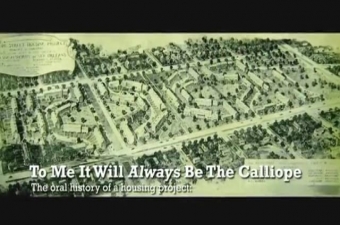
"To Me It Will Always Be The Calliope," a 30-minute documentary on the history of the B.W. Cooper public housing complex.
Video posted by Denise Johnson.
"To Me It Will Always Be The Calliope," a 30-minute documentary on the history of the B.W. Cooper public housing complex.
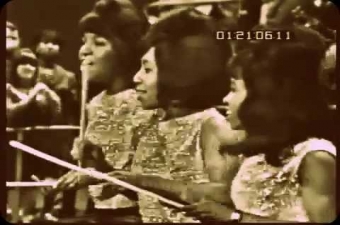
The Dixie Cups, a group formed in the Calliope, perform "Iko Iko," a 1965 hit based on Mardi Gras Indian chants.
Video posted by 2raloo.
The Dixie Cups, a group formed in the Calliope, perform "Iko Iko," a 1965 hit based on Mardi Gras Indian chants.
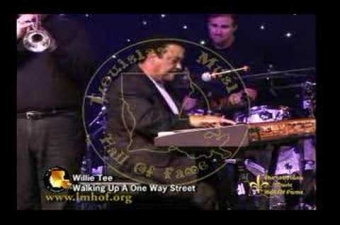
Willie Tee Turbinton, who grew up in the Calliope, performs his best-known songs, "Teasin' You" and "Walking Up a One Way Street."
Video posted by LA Music Hall of Fame.
Willie Tee Turbinton, who grew up in the Calliope, performs his best-known songs, "Teasin' You" and "Walking Up a One Way Street."
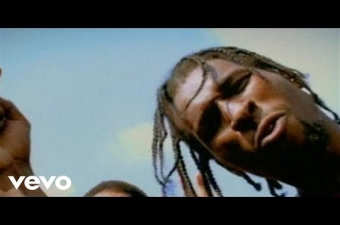
Video for the 1999 hit "Hoody Hoo" by TRU, a group composed of Master P, C Murder, and Silkk the Shocker, featuring footage from the Calliope, and cameos by Black Masking Indians and social aid and pleasure club members.
Video posted by emimusic.
Video for the 1999 hit "Hoody Hoo" by TRU, a group composed of Master P, C Murder, and Silkk the Shocker, featuring footage from the Calliope, and cameos by Black Masking Indians and social aid and pleasure club members.
Images














